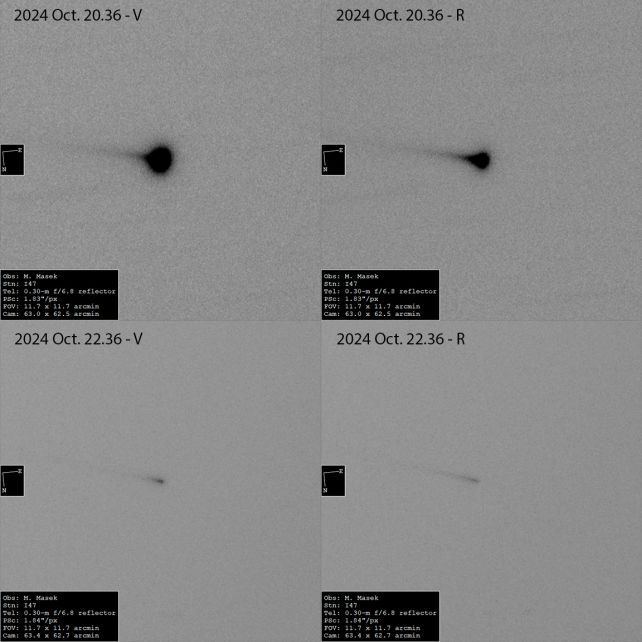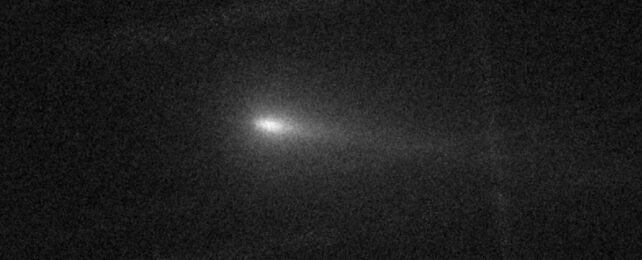A comet that was predicted to become bright enough to see with the naked eye at Halloween seems to be disintegrating right before our eyes.
It's called C/2024 S1, discovered on September 27, a rare Kreutz sungrazer comet whose trajectory is due to bring it within just 1.2 million kilometers (750,000 miles) of the Sun on 28 October 2024.
Alas, it seems that C/2024 S1 has, after billions of years, disintegrated. Images of the object taken over the course of October show it brightening with outburst activity before dimming, its nucleus appearing to vanish, leaving behind a tail of dust and gas, and, maybe, a cloud of cometary debris.
It's a bit disappointing – but not entirely unexpected, as comets of this kind often disintegrate as they draw near the Sun.
There have been signs of instability in the comet. It has undergone at least one outburst, which is what it sounds like: a sudden release of dust and gas, causing the comet to brighten significantly, taking several days to return to normal.

This is not unusual behavior for a comet, but it can be a sign of nucleus fragmentation – where the main body, or nucleus, of a comet starts to break apart.
This probably happens because of what they are made of. Comets hail from the very cold outer reaches of the Solar System, and are laden with forms of ice.
Disintegration seems to happen very quickly, so the reasons why aren't entirely clear, but one possible explanation is that the sublimation of ice and release of gas and dust can cause the spin of the comet to accelerate, resulting in it breaking apart under centrifugal force.
We got a rare glimpse of this process in 2020, when Comet C/2019 Y4 shattered to smithereens when it drew near the Sun under the watchful eye of the Hubble Space Telescope.
A notice posted to Astronomer's Telegram on October 9 posits that changes in the appearance of the comet could be a sign of disintegration.
Since then, images taken on October 20 and 22 by amateur astronomer Martin Mašek of Czechia show that, sometime during that time frame, the cometary nucleus seems to have vanished from visibility, and has grown even dimmer still.

The visibility forecast for C/2024 S1 suggested that it may become brighter than Venus, and even be visible in the daytime sky. If the comet has undergone, or is undergoing fragmentation before perihelion, its closest approach to the Sun, it may not be quite that bright, but there may still be something to see.
A large fragment of the nucleus may survive the disintegration process and continue the comet's journey towards the Sun. And the tail may continue to be visible even if the cometary nucleus disintegrates, at least for a short time.
Interestingly, C/2024 S1 is, itself, thought to be a fragment of a larger comet. All Kreutz sungrazers are thought to be what remains of the Great Comet of 1106 CE, which broke apart and formed many smaller comets as it looped around the Sun. Those smaller comets include Comet Ikeya-Seki of 1965, which lit up the sky nearly as brightly as the full Moon.
At the moment, the C/2024 S1 may be visible with binoculars or a small telescope in the Southern Hemisphere particularly. After perihelion, if the comet has survived, it should be visible in the Northern Hemisphere.
If the nucleus of C/2024 S1 disintegrates during perihelion, we could spot a long, curved tail, without a bright head. We're going to have to wait and see. Honestly, though, what could be more apropos than a headless comet for Halloween?
If you have the right equipment, and want to see if you can spot C/2024 S1, you can look for where it is in the sky using The Sky Live. Happy hunting!
